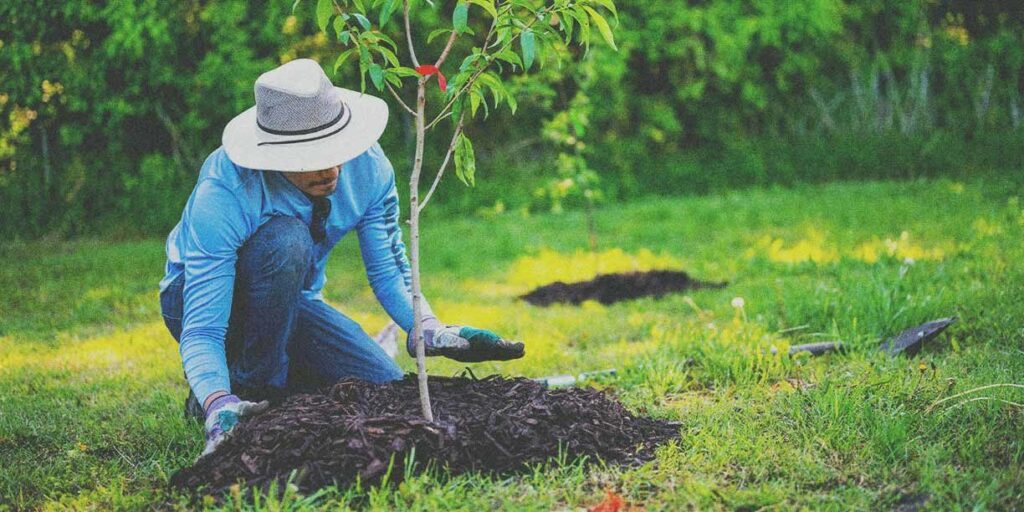
Why Planting Trees is Key to Fighting Climate Change
“Why Planting Trees is Key to Fighting Climate Change”Planting trees is one of the simplest ways to fight climate change. It’s also a solution that appeals to a broad range of people, and is supported by a number of scientists.
Trees store carbon dioxide, which is one of the main culprits of global warming. They also release oxygen, which keeps the air clean.
1. They Store Carbon
Trees store carbon by capturing atmospheric CO2 during photosynthesis (photosynthesis is the process by which plants take in sunlight and use it to make organic molecules).
Roughly half of plant biomass (biomass that is accumulated in the green parts of trees and other living things) is made up of carbon molecules. Wood, which is made up of cellulose and lignin, also stores a lot of carbon.
Trees also store carbon in the soil where they live. Soils are the largest on-land carbon pool and help forests filter water, maintain biodiversity and store nutrients for other soil organisms.
2. They Reduce Emissions
Planting trees is one of the most cost-effective ways to mitigate carbon dioxide emissions. Every tree that’s planted reduces the amount of CO2 emitted into the atmosphere by almost 5 percent.
Trees capture CO2 in the air and convert it into organic molecules through photosynthesis. These molecules are the building blocks of plants and essential to their vital functions.
In turn, these molecules absorb other harmful pollutants from the air and convert them to less toxic substances. This process is called “carbon sequestration.”
In addition, trees cool the air locally by capturing a lot of heat that normally escapes from the ground through water vapor. This is a key to reducing what’s known as the urban heat island effect.
3. They Help Combat Droughts
Trees have extensive root systems that help them absorb water and mineral nutrients. They also have tracheids, tiny cylindrical conduits, that connect the roots to the leaves.
When drought affects trees, it disrupts the transport of water from the roots to the leaves. This process, called vascular water transport, is crucial for the growth of a plant.
Drought stress can reduce a tree’s ability to grow, resist pests, and produce food through photosynthesis. It can also reduce its water absorbing capacity and the ability to cool itself against fires.
Drought can also trigger the closing of a tree’s stomata, its pores through which it pulls CO2 from the atmosphere to do photosynthesis. This means that it cannot use that carbon for energy production, which in turn puts a strain on the tree’s internal storage.
4. They Help Maintain Biodiversity
Besides providing shade and homes for creatures, trees also provide oxygen. They absorb sound and reduce noise pollution, as well as reduce air temperatures.
Trees can help prevent soil erosion by retaining water and distributing rainfall more evenly. They also trap chemicals and keep them away from lakes and rivers.
Planting trees also slows down rain as it falls by intercepting drops with their leaves. This helps to slow down surface runoff, which can cause flooding and water pollution in urban areas.
While the benefits of trees are clear, there’s a dark side to the story. Deforestation, which removes forests and replaces them with agriculture, farming or mining, is an important contributor to accelerated global temperature change.
5. They Help Combat Climate Change
Trees are one of the best and most efficient ways to absorb climate changing carbon dioxide. Just like sponges, they suck up carbon dioxide from the air and use it to create glucose and starch in their roots, stems and leaves.
The sugars feed the tree and it in turn releases oxygen back into the atmosphere, making it one of nature’s most effective climate change solutions.
But trees aren’t just good at absorbing CO2 and providing oxygen; they’re also incredibly important for many other reasons. They help combat climate change by reducing temperatures, protecting communities, preventing natural disasters and more.